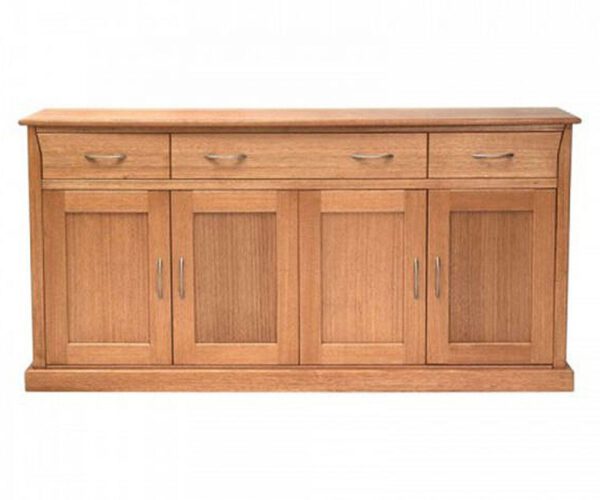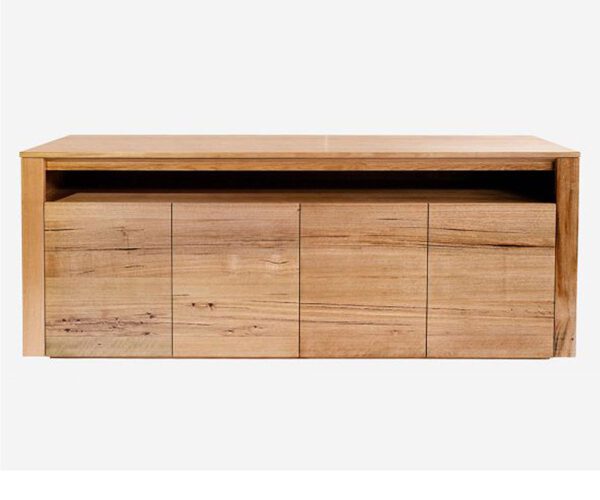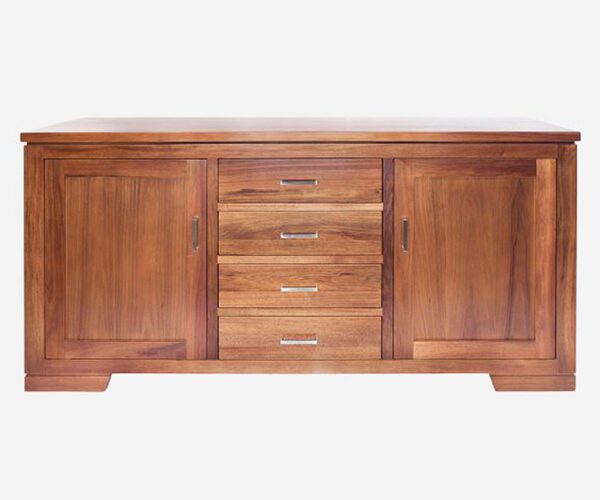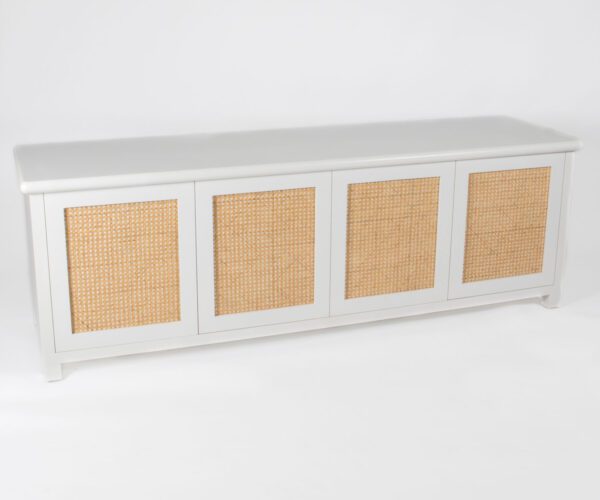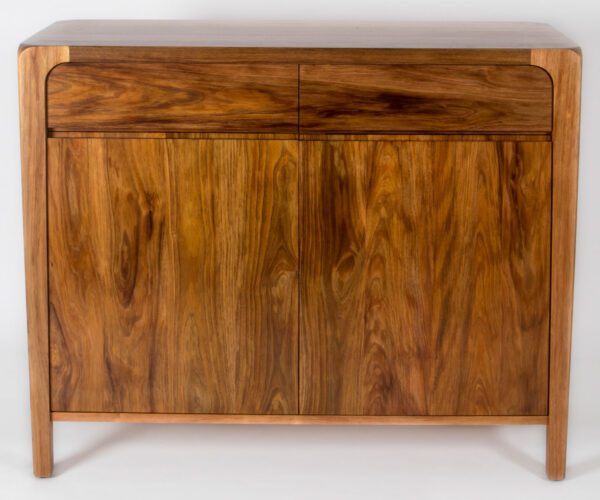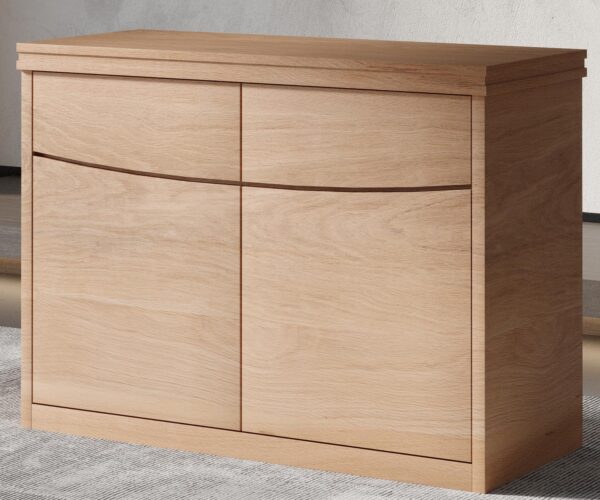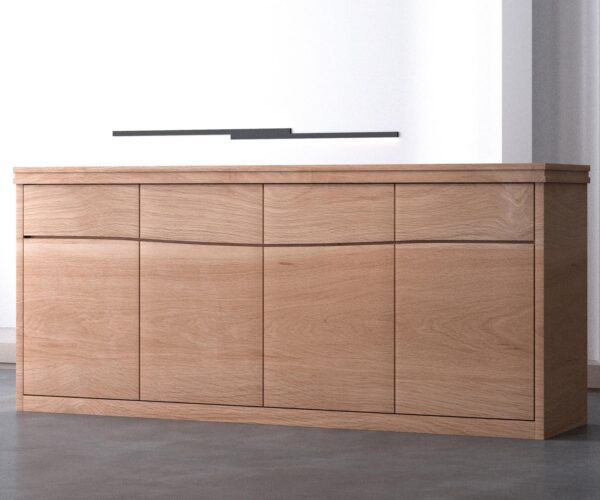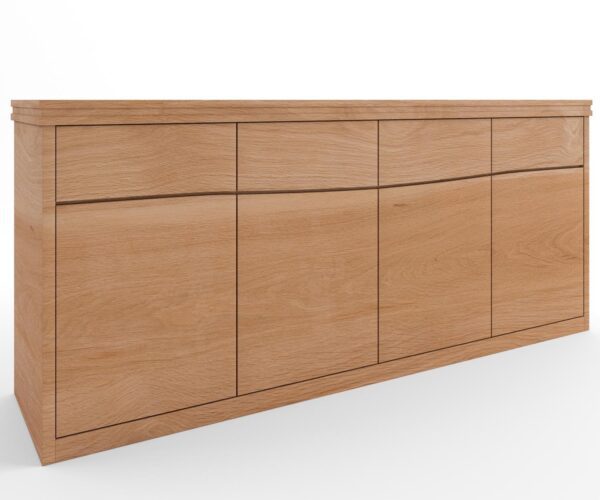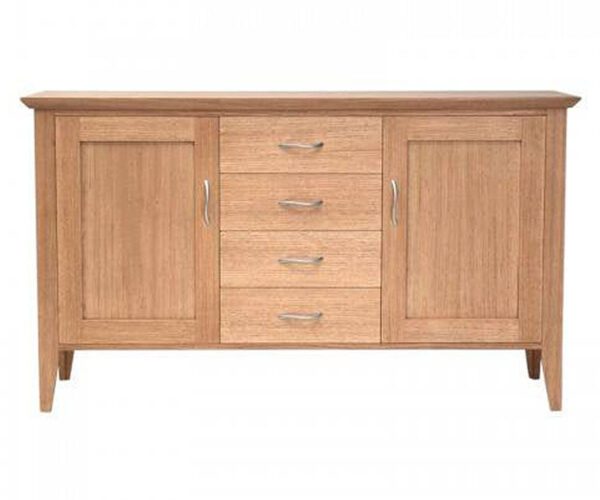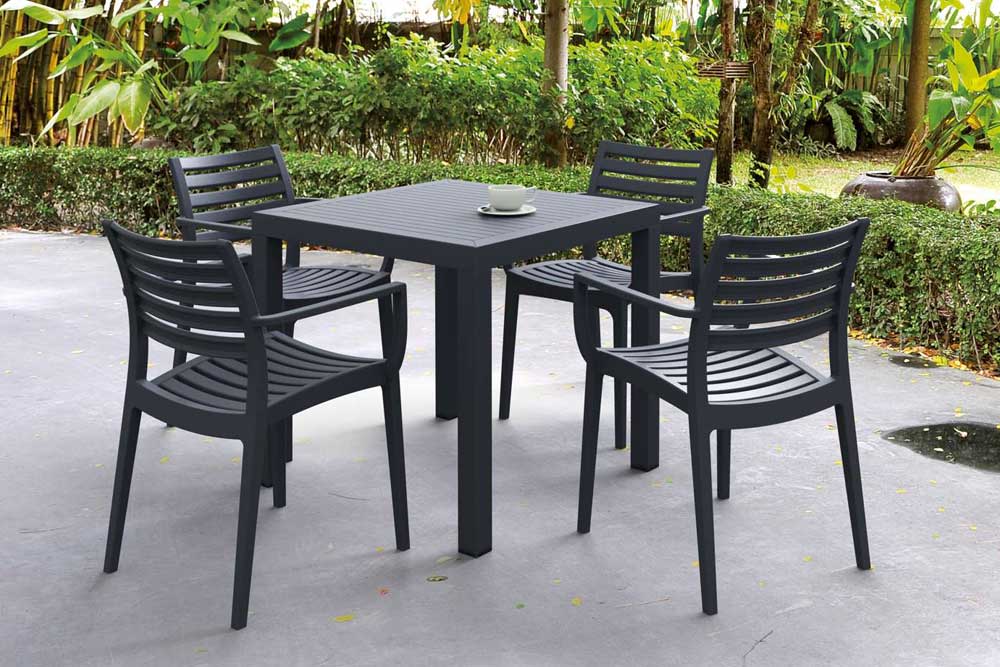[Checklist] A Guide to Procuring Furniture for Australian Aged Care Facilities

As the demand for quality aged care facilities in Australia continues to rise, the importance of thoughtfully procuring furniture cannot be overstated. Furniture plays a crucial role in the well-being, comfort, and safety of elderly residents.
For procurement managers embarking on the task of sourcing furniture for Australian aged care facilities, we’ve compiled a checklist to guide you through the process.
General Considerations
- Compliance with Standards: Ensuring that all furniture adheres to Australian safety and quality standards for healthcare and aged care facilities is paramount.
- Diverse Resident Needs: Keep in mind the diverse needs of residents, considering factors such as mobility limitations, comfort preferences, and potential health conditions.
- Cultural Sensitivity: Be mindful of the cultural backgrounds of residents and incorporate furniture that respects and reflects diverse cultural preferences.
- Cognitive Considerations: Take into account the cognitive abilities of residents. For example, choose furniture with clear and simple designs to minimize confusion.
- Fire Safety Compliance: Ensure that all furniture complies with fire safety regulations, using flame-retardant materials where necessary.
- Environmental Sustainability: Consider eco-friendly and sustainable materials to align with growing environmental consciousness. This can enhance the facility’s reputation and contribute to a healthier planet.
- Flexible Use of Space: Opt for furniture that allows for flexible use of space, facilitating easy reconfiguration as the needs of residents evolve.
- Technology Integration: Explore furniture designs that integrate technology, such as charging ports or built-in communication devices, to enhance the residents’ connectivity.
- Resident Privacy: Ensure that the layout of the furniture in communal areas respects the privacy of residents and provides spaces for personal reflection.
- Emergency Preparedness: Plan for emergency situations by selecting furniture that does not obstruct evacuation routes and is easy to move in case of emergencies.
- Age-Friendly Design Principles: Embrace age-friendly design principles, including good lighting, high color contrast, and clear signage, to create an environment that is supportive for aging individuals.
- Storage Solutions: Provide ample storage solutions within furniture to accommodate personal belongings, helping residents maintain a sense of independence and identity.
- Inclusive Design: Prioritize inclusive design principles that accommodate individuals with varying levels of physical and cognitive abilities.
- Maintenance and Lifespan: Consider the maintenance requirements and expected lifespan of furniture to ensure cost-effectiveness in the long run.
- Staff Comfort and Accessibility: Take into account the comfort and accessibility of staff, as they interact with residents and utilize the furniture in their daily activities.
- Trial Periods: Consider implementing trial periods for certain furniture items to assess their practicality and resident satisfaction before making larger purchases.
- Community Integration: Design furniture arrangements that promote community integration, fostering a sense of belonging and social connection among residents.
- Therapeutic Considerations: Collaborate with healthcare professionals to incorporate therapeutic elements into furniture design, enhancing the overall well-being of residents.
- Feedback Mechanisms: Establish effective feedback mechanisms to continuously gather insights from residents, staff, and family members for ongoing improvements.
- Adaptability to Future Needs: Choose furniture that can be easily adapted or upgraded to meet future needs and technological advancements.
Lounge and Common Area Furniture
- Comfort is Key: Opt for lounge chairs with ergonomic designs, providing proper lumbar support, and sofas with ample cushioning.
- Adjustability Matters: Choose chairs with adjustable features like height, recline, and armrests to cater to individual preferences.
- Material Durability: Select furniture with sturdy frames made from durable materials and easy-to-clean, stain-resistant fabrics.
- Wheelchair Accessibility: Ensure seating arrangements accommodate residents using wheelchairs, promoting inclusivity.
- Armchairs: Provide additional comfortable seating options with armchairs, offering individual spaces for relaxation.
- Recliners: Include reclining chairs that offer residents the flexibility to adjust their seating positions for optimal comfort.
- Accent Chairs: Introduce accent chairs with stylish designs to add visual interest and create inviting seating arrangements.
- Chaise Lounges: Consider chaise lounges for a touch of luxury, providing extended seating with a comfortable reclining option.
- Sectional Sofas: Opt for sectional sofas to create versatile seating arrangements that can be adapted to different room layouts.
- Ottomans/Poufs: Integrate ottomans or poufs for added flexibility, serving as footrests, additional seating, or even makeshift tables.
- Modular Sofa Systems: Explore modular sofa systems that allow for easy customization to suit the specific needs of the space.
- Coffee Tables: Place sturdy and easily accessible coffee tables for residents to place drinks, snacks, or reading materials.
- Side Tables: Add side tables near seating areas to provide convenient surfaces for personal items or decorative elements.
- Nesting Tables: Consider nesting tables that can be easily arranged and moved to accommodate various activities.
- Console Tables: Integrate console tables for additional storage and display space, enhancing the aesthetics of the common areas.
- Media Centers: Set up media centers with comfortable seating for group activities such as movie nights or interactive games.
- Bookshelves: Install bookshelves with a selection of reading materials to create a cozy reading nook within the common area.
- Game Tables: Include game tables for board games, puzzles, or card games, encouraging social interaction and mental stimulation.
- Floor Lamps: Enhance the ambiance with floor lamps that provide soft, adjustable lighting for reading or relaxation.
- Area Rugs: Define lounge spaces and add warmth with area rugs that are easy to clean and maintain.
- Decorative Pillows and Throws: Introduce decorative pillows and throws to enhance comfort and add a touch of style to seating.
- Plants and Greenery: Incorporate indoor plants to bring a natural element into the space, promoting a calming and inviting atmosphere.
- Grab Bars: Install discreet grab bars in common areas to provide additional support for residents with mobility challenges.
- Cushioned Corners: Consider furniture with rounded or cushioned corners to minimize the risk of injuries in case of accidental bumps.
Dining Room Furniture
- Accessible Dining Tables: Prioritize dining tables with adjustable heights for residents using wheelchairs and easy-to-clean surfaces.
- Comfortable Dining Chairs: Opt for dining chairs that provide proper support and are made from easy-to-clean materials.
- Community Dining Options: Consider communal dining spaces to foster social interaction among residents.
- Buffet or Sideboard: A buffet or sideboard provides additional storage space for dining essentials such as plates, utensils, and linens.
- Dining Room Chairs with Casters: Chairs with casters offer increased mobility, making it easier for residents to move in and out from the dining table. This feature is particularly useful for those who may have difficulty pushing or pulling chairs without assistance.
- Dining Room Hutch: A hutch can be a stylish and functional addition to the dining area, offering both display and storage space.
- Foldable Dining Tables: Consider foldable dining tables that can be adjusted to accommodate different group sizes and preferences.
- Dining Room Dividers: Dividers can be used to create distinct dining areas within larger spaces, providing a sense of privacy and intimacy during meals.
Bedroom Furniture
- Adjustable Beds: Choose beds with adjustable height for easy access and mattresses that offer both comfort and support.
- Functional Nightstands: Ensure bedside tables are within easy reach and provide adequate storage for personal belongings.
- Wardrobes with Accessibility: Select accessible wardrobes with adjustable shelving and ample hanging space.
- Bedside Commodes: Bedside commodes serve as portable toilets, offering convenience for residents who may have difficulty reaching the bathroom independently. Look for commodes with adjustable height to accommodate various resident needs.
- Overbed Tables: Overbed tables provide a convenient surface for residents to eat, read, or engage in other activities from the comfort of their beds. Opt for tables with adjustable height to cater to individual preferences.
- Dressers with Easy-Pull Drawers: Dressers with ample drawer space help residents organize their clothing and personal items. Choose dressers with easy-pull drawers for residents with limited hand dexterity.
- Comfortable Reading Chairs: Include comfortable reading chairs in the bedroom to provide residents with a cozy spot for reading or quiet contemplation. Ensure the chairs offer proper support, considering factors such as lumbar support and armrests.
- Vanity or Dressing Table: A vanity or dressing table provides a dedicated space for residents to engage in personal grooming activities. Include a mirror for residents to use while dressing or grooming.
Outdoor Furniture
- Accessible Outdoor Seating: Include outdoor benches or chairs with armrests, providing comfortable options for outdoor spaces.
- Embrace Nature: Consider incorporating gardens or greenery to enhance the outdoor experience for residents.
- Outdoor Rocking Chairs: These not only offer a comfortable and soothing place to sit but also provide a gentle form of physical activity. Rocking chairs can contribute to relaxation and can be particularly beneficial for those who enjoy spending time outdoors.
- Shade Structures: Install shade structures, such as pergolas or umbrellas, to offer protection from the sun. These additions not only provide a comfortable and shaded area for residents to enjoy but also contribute to sun safety. Ensuring there are shaded options encourages residents to spend more time outdoors without concerns about excessive sun exposure.
- Wheelchair-Accessible Picnic Tables: Facilitate outdoor gatherings and communal activities with wheelchair-accessible picnic tables. These tables are designed to accommodate individuals in wheelchairs, ensuring that all residents can participate in outdoor meals, games, or socializing. It promotes inclusivity and a sense of community within the facility.
- Outdoor Exercise Equipment: Incorporate outdoor exercise equipment suitable for seniors. Low-impact exercise options, such as stationary bikes or resistance training stations, allow residents to engage in physical activity in the fresh air. Outdoor exercise can contribute to improved physical health and overall well-being.
- Bird Feeders and Gardens: Create a sensory-rich environment by incorporating bird feeders and gardens into the outdoor spaces. Bird feeders attract local wildlife, providing residents with the opportunity to observe and connect with nature. Accessible raised garden beds can also offer a therapeutic and engaging activity for those interested in gardening, contributing to mental and emotional well-being.
Bathroom Furniture
- Safe Shower Options: Provide chairs designed for safe use in showers with waterproof and rust-resistant materials.
- Supportive Toilet Aids: Include toilet frames or raised seats to support residents with mobility aids.
- Grab Bars: Installing grab bars strategically around the bathroom provides essential support for residents with mobility challenges. Ensure the bars are securely anchored to the wall and are positioned near toilets, showers, and bathtubs.
- Shower Benches and Stools: Shower benches and stools offer a comfortable and secure seating option for residents who may find standing for long periods challenging. Opt for benches with non-slip surfaces and adjustable height options to accommodate various user needs.
- Toiletry Storage Units: Toiletry storage units, such as cabinets or shelves, provide a designated space for residents to store personal items within easy reach. Choose units with easy-to-clean surfaces and consider residents’ mobility when determining placement.
- Accessible Vanities: Adapted vanities with accessible features, such as lower countertops and open space beneath, cater to residents using wheelchairs or mobility aids. Ensure the vanities are designed for easy wheelchair access, and choose materials resistant to water damage.
- Bidets and Toilet Seat Risers: Bidets and raised toilet seats enhance bathroom hygiene and make it easier for residents to use the toilet independently. Select bidets with user-friendly controls, and ensure toilet seat risers are securely attached to prevent slips.
Additional Considerations
- Infection Control Measures: Prioritize furniture designed for easy cleaning and disinfection, incorporating antimicrobial or resistant materials where applicable.
- Fall Prevention Strategies: Mitigate the risk of falls with non-slip materials and appropriate bed and chair heights.
- User Education: Supply educational materials on the proper use and adjustment of furniture to both residents and staff.
- Budget and Cost-Effectiveness: Consider long-term maintenance costs and durability when evaluating budget constraints.
- Consultation with Stakeholders: Involve residents, caregivers, and healthcare professionals in the selection process to ensure inclusivity and satisfaction.
- Supplier Reputation: Choose suppliers with a proven track record in providing furniture for aged care facilities.
Regularly reviewing and updating the furniture procurement strategy based on feedback from stakeholders is crucial to ensuring ongoing satisfaction and adherence to evolving standards and regulations. By prioritizing comfort, accessibility, and safety, you contribute to the creation of a nurturing environment for elderly residents in Australian aged care facilities.
Australian Made Aged Care Buffet Units: Sustainability Meets Style
We prioritize sustainability by employing eco-friendly materials, minimizing waste through efficient production processes, and embracing responsible sourcing practices, ensuring that every piece we craft reflects our commitment to a greener and more environmentally conscious future.
More News
[Checklist] A Guide to Procuring Furniture for Australian Aged Care Facilities

As the demand for quality aged care facilities in Australia continues to rise, the importance of thoughtfully procuring furniture cannot be overstated. Furniture plays a crucial role in the well-being, comfort, and safety of elderly residents.
For procurement managers embarking on the task of sourcing furniture for Australian aged care facilities, we’ve compiled a checklist to guide you through the process.
General Considerations
- Compliance with Standards: Ensuring that all furniture adheres to Australian safety and quality standards for healthcare and aged care facilities is paramount.
- Diverse Resident Needs: Keep in mind the diverse needs of residents, considering factors such as mobility limitations, comfort preferences, and potential health conditions.
- Cultural Sensitivity: Be mindful of the cultural backgrounds of residents and incorporate furniture that respects and reflects diverse cultural preferences.
- Cognitive Considerations: Take into account the cognitive abilities of residents. For example, choose furniture with clear and simple designs to minimize confusion.
- Fire Safety Compliance: Ensure that all furniture complies with fire safety regulations, using flame-retardant materials where necessary.
- Environmental Sustainability: Consider eco-friendly and sustainable materials to align with growing environmental consciousness. This can enhance the facility’s reputation and contribute to a healthier planet.
- Flexible Use of Space: Opt for furniture that allows for flexible use of space, facilitating easy reconfiguration as the needs of residents evolve.
- Technology Integration: Explore furniture designs that integrate technology, such as charging ports or built-in communication devices, to enhance the residents’ connectivity.
- Resident Privacy: Ensure that the layout of the furniture in communal areas respects the privacy of residents and provides spaces for personal reflection.
- Emergency Preparedness: Plan for emergency situations by selecting furniture that does not obstruct evacuation routes and is easy to move in case of emergencies.
- Age-Friendly Design Principles: Embrace age-friendly design principles, including good lighting, high color contrast, and clear signage, to create an environment that is supportive for aging individuals.
- Storage Solutions: Provide ample storage solutions within furniture to accommodate personal belongings, helping residents maintain a sense of independence and identity.
- Inclusive Design: Prioritize inclusive design principles that accommodate individuals with varying levels of physical and cognitive abilities.
- Maintenance and Lifespan: Consider the maintenance requirements and expected lifespan of furniture to ensure cost-effectiveness in the long run.
- Staff Comfort and Accessibility: Take into account the comfort and accessibility of staff, as they interact with residents and utilize the furniture in their daily activities.
- Trial Periods: Consider implementing trial periods for certain furniture items to assess their practicality and resident satisfaction before making larger purchases.
- Community Integration: Design furniture arrangements that promote community integration, fostering a sense of belonging and social connection among residents.
- Therapeutic Considerations: Collaborate with healthcare professionals to incorporate therapeutic elements into furniture design, enhancing the overall well-being of residents.
- Feedback Mechanisms: Establish effective feedback mechanisms to continuously gather insights from residents, staff, and family members for ongoing improvements.
- Adaptability to Future Needs: Choose furniture that can be easily adapted or upgraded to meet future needs and technological advancements.
Lounge and Common Area Furniture
- Comfort is Key: Opt for lounge chairs with ergonomic designs, providing proper lumbar support, and sofas with ample cushioning.
- Adjustability Matters: Choose chairs with adjustable features like height, recline, and armrests to cater to individual preferences.
- Material Durability: Select furniture with sturdy frames made from durable materials and easy-to-clean, stain-resistant fabrics.
- Wheelchair Accessibility: Ensure seating arrangements accommodate residents using wheelchairs, promoting inclusivity.
- Armchairs: Provide additional comfortable seating options with armchairs, offering individual spaces for relaxation.
- Recliners: Include reclining chairs that offer residents the flexibility to adjust their seating positions for optimal comfort.
- Accent Chairs: Introduce accent chairs with stylish designs to add visual interest and create inviting seating arrangements.
- Chaise Lounges: Consider chaise lounges for a touch of luxury, providing extended seating with a comfortable reclining option.
- Sectional Sofas: Opt for sectional sofas to create versatile seating arrangements that can be adapted to different room layouts.
- Ottomans/Poufs: Integrate ottomans or poufs for added flexibility, serving as footrests, additional seating, or even makeshift tables.
- Modular Sofa Systems: Explore modular sofa systems that allow for easy customization to suit the specific needs of the space.
- Coffee Tables: Place sturdy and easily accessible coffee tables for residents to place drinks, snacks, or reading materials.
- Side Tables: Add side tables near seating areas to provide convenient surfaces for personal items or decorative elements.
- Nesting Tables: Consider nesting tables that can be easily arranged and moved to accommodate various activities.
- Console Tables: Integrate console tables for additional storage and display space, enhancing the aesthetics of the common areas.
- Media Centers: Set up media centers with comfortable seating for group activities such as movie nights or interactive games.
- Bookshelves: Install bookshelves with a selection of reading materials to create a cozy reading nook within the common area.
- Game Tables: Include game tables for board games, puzzles, or card games, encouraging social interaction and mental stimulation.
- Floor Lamps: Enhance the ambiance with floor lamps that provide soft, adjustable lighting for reading or relaxation.
- Area Rugs: Define lounge spaces and add warmth with area rugs that are easy to clean and maintain.
- Decorative Pillows and Throws: Introduce decorative pillows and throws to enhance comfort and add a touch of style to seating.
- Plants and Greenery: Incorporate indoor plants to bring a natural element into the space, promoting a calming and inviting atmosphere.
- Grab Bars: Install discreet grab bars in common areas to provide additional support for residents with mobility challenges.
- Cushioned Corners: Consider furniture with rounded or cushioned corners to minimize the risk of injuries in case of accidental bumps.
Dining Room Furniture
- Accessible Dining Tables: Prioritize dining tables with adjustable heights for residents using wheelchairs and easy-to-clean surfaces.
- Comfortable Dining Chairs: Opt for dining chairs that provide proper support and are made from easy-to-clean materials.
- Community Dining Options: Consider communal dining spaces to foster social interaction among residents.
- Buffet or Sideboard: A buffet or sideboard provides additional storage space for dining essentials such as plates, utensils, and linens.
- Dining Room Chairs with Casters: Chairs with casters offer increased mobility, making it easier for residents to move in and out from the dining table. This feature is particularly useful for those who may have difficulty pushing or pulling chairs without assistance.
- Dining Room Hutch: A hutch can be a stylish and functional addition to the dining area, offering both display and storage space.
- Foldable Dining Tables: Consider foldable dining tables that can be adjusted to accommodate different group sizes and preferences.
- Dining Room Dividers: Dividers can be used to create distinct dining areas within larger spaces, providing a sense of privacy and intimacy during meals.
Bedroom Furniture
- Adjustable Beds: Choose beds with adjustable height for easy access and mattresses that offer both comfort and support.
- Functional Nightstands: Ensure bedside tables are within easy reach and provide adequate storage for personal belongings.
- Wardrobes with Accessibility: Select accessible wardrobes with adjustable shelving and ample hanging space.
- Bedside Commodes: Bedside commodes serve as portable toilets, offering convenience for residents who may have difficulty reaching the bathroom independently. Look for commodes with adjustable height to accommodate various resident needs.
- Overbed Tables: Overbed tables provide a convenient surface for residents to eat, read, or engage in other activities from the comfort of their beds. Opt for tables with adjustable height to cater to individual preferences.
- Dressers with Easy-Pull Drawers: Dressers with ample drawer space help residents organize their clothing and personal items. Choose dressers with easy-pull drawers for residents with limited hand dexterity.
- Comfortable Reading Chairs: Include comfortable reading chairs in the bedroom to provide residents with a cozy spot for reading or quiet contemplation. Ensure the chairs offer proper support, considering factors such as lumbar support and armrests.
- Vanity or Dressing Table: A vanity or dressing table provides a dedicated space for residents to engage in personal grooming activities. Include a mirror for residents to use while dressing or grooming.
Outdoor Furniture
- Accessible Outdoor Seating: Include outdoor benches or chairs with armrests, providing comfortable options for outdoor spaces.
- Embrace Nature: Consider incorporating gardens or greenery to enhance the outdoor experience for residents.
- Outdoor Rocking Chairs: These not only offer a comfortable and soothing place to sit but also provide a gentle form of physical activity. Rocking chairs can contribute to relaxation and can be particularly beneficial for those who enjoy spending time outdoors.
- Shade Structures: Install shade structures, such as pergolas or umbrellas, to offer protection from the sun. These additions not only provide a comfortable and shaded area for residents to enjoy but also contribute to sun safety. Ensuring there are shaded options encourages residents to spend more time outdoors without concerns about excessive sun exposure.
- Wheelchair-Accessible Picnic Tables: Facilitate outdoor gatherings and communal activities with wheelchair-accessible picnic tables. These tables are designed to accommodate individuals in wheelchairs, ensuring that all residents can participate in outdoor meals, games, or socializing. It promotes inclusivity and a sense of community within the facility.
- Outdoor Exercise Equipment: Incorporate outdoor exercise equipment suitable for seniors. Low-impact exercise options, such as stationary bikes or resistance training stations, allow residents to engage in physical activity in the fresh air. Outdoor exercise can contribute to improved physical health and overall well-being.
- Bird Feeders and Gardens: Create a sensory-rich environment by incorporating bird feeders and gardens into the outdoor spaces. Bird feeders attract local wildlife, providing residents with the opportunity to observe and connect with nature. Accessible raised garden beds can also offer a therapeutic and engaging activity for those interested in gardening, contributing to mental and emotional well-being.
Bathroom Furniture
- Safe Shower Options: Provide chairs designed for safe use in showers with waterproof and rust-resistant materials.
- Supportive Toilet Aids: Include toilet frames or raised seats to support residents with mobility aids.
- Grab Bars: Installing grab bars strategically around the bathroom provides essential support for residents with mobility challenges. Ensure the bars are securely anchored to the wall and are positioned near toilets, showers, and bathtubs.
- Shower Benches and Stools: Shower benches and stools offer a comfortable and secure seating option for residents who may find standing for long periods challenging. Opt for benches with non-slip surfaces and adjustable height options to accommodate various user needs.
- Toiletry Storage Units: Toiletry storage units, such as cabinets or shelves, provide a designated space for residents to store personal items within easy reach. Choose units with easy-to-clean surfaces and consider residents’ mobility when determining placement.
- Accessible Vanities: Adapted vanities with accessible features, such as lower countertops and open space beneath, cater to residents using wheelchairs or mobility aids. Ensure the vanities are designed for easy wheelchair access, and choose materials resistant to water damage.
- Bidets and Toilet Seat Risers: Bidets and raised toilet seats enhance bathroom hygiene and make it easier for residents to use the toilet independently. Select bidets with user-friendly controls, and ensure toilet seat risers are securely attached to prevent slips.
Additional Considerations
- Infection Control Measures: Prioritize furniture designed for easy cleaning and disinfection, incorporating antimicrobial or resistant materials where applicable.
- Fall Prevention Strategies: Mitigate the risk of falls with non-slip materials and appropriate bed and chair heights.
- User Education: Supply educational materials on the proper use and adjustment of furniture to both residents and staff.
- Budget and Cost-Effectiveness: Consider long-term maintenance costs and durability when evaluating budget constraints.
- Consultation with Stakeholders: Involve residents, caregivers, and healthcare professionals in the selection process to ensure inclusivity and satisfaction.
- Supplier Reputation: Choose suppliers with a proven track record in providing furniture for aged care facilities.
Regularly reviewing and updating the furniture procurement strategy based on feedback from stakeholders is crucial to ensuring ongoing satisfaction and adherence to evolving standards and regulations. By prioritizing comfort, accessibility, and safety, you contribute to the creation of a nurturing environment for elderly residents in Australian aged care facilities.
Australian Made Aged Care Buffet Units: Sustainability Meets Style
We prioritize sustainability by employing eco-friendly materials, minimizing waste through efficient production processes, and embracing responsible sourcing practices, ensuring that every piece we craft reflects our commitment to a greener and more environmentally conscious future.
Commercial furniture by room
Based in Brisbane, we’re an Australian manufacturer of aged care furniture, retirement living furniture, hospital & healthcare furniture, hotel & accommodation furniture and student accommodation furniture. We also supply a range of commercial office furniture.
Discover the FHG Look Book: Your Source of Inspiration for Quality Australian-Made Commercial Furniture
- Quality Craftsmanship: See why we’ve been a trusted partner for over 25 years.
- Local Excellence: Learn how our Brisbane team ensures the highest standards.
- Inspiration and Ideas: Find innovative furniture solutions for any environment.
Don’t miss the opportunity to transform your commercial space with FHG’s expertly crafted furniture. Download the FHG Look Book today and start your journey towards exceptional design and quality.

